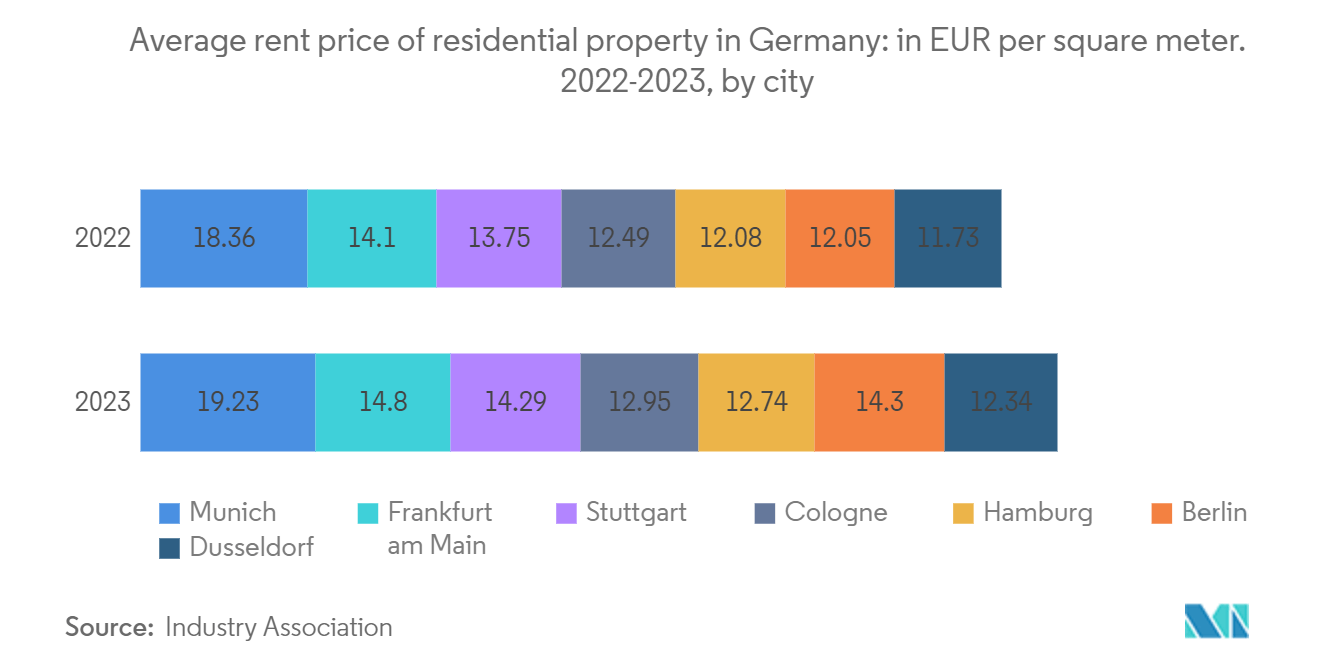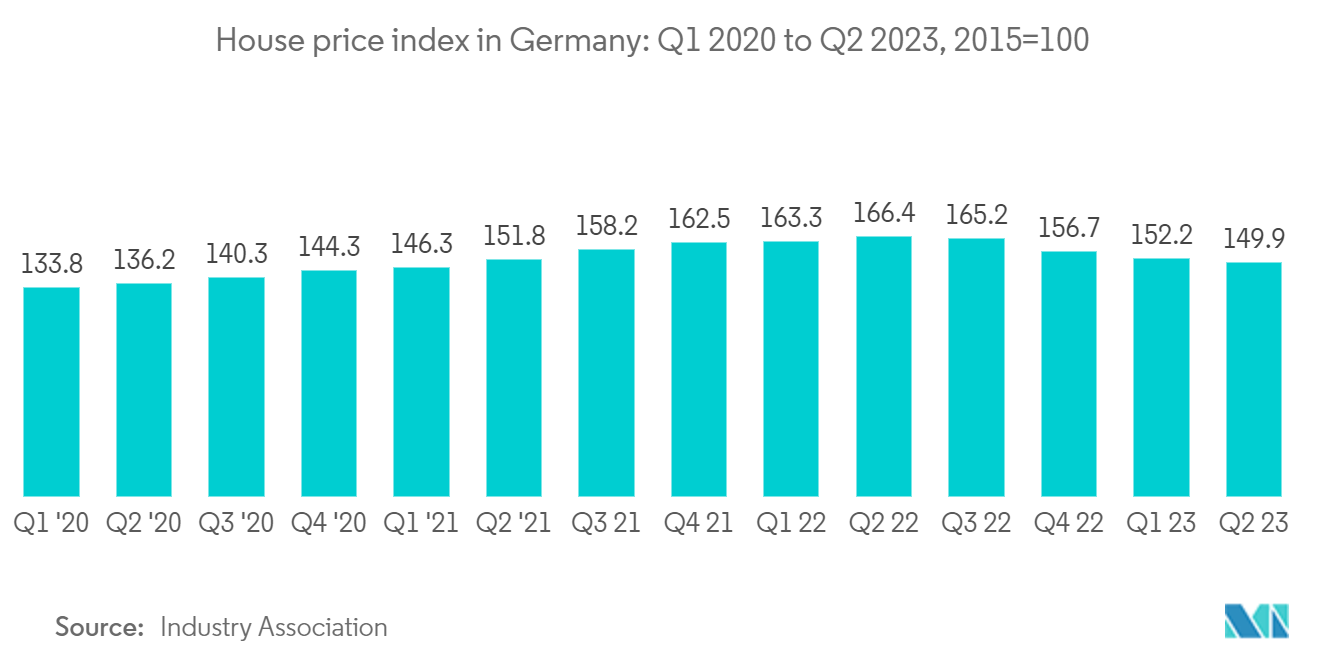Market Trends of Germany Residential Real Estate Industry
Strong Demand And Rising Construction Activities To Drive The Market
In March 2023, Germany approved the construction of 24,500 houses. According to Federal Statistical Office Destatis, it was a 29.6% decrease compared to March 2022. New residential permits issued since May 2022 have dropped by 10% compared to the same month last year and fell by more than 20% from October 2022 to January 2023.
Between January and March 2023, 68,700 residential building licenses were administered, a decrease of 25.7% from the same period the previous year. In the fall of building projects, the main factors are expected to remain the high costs of construction materials and the poor financial situation. The result is that building permits are issued for new homes and apartments in existing buildings.
The migration crisis and strong economic growth have added to the already high demand in the country in recent years. Consequently, the essential demand drivers are also considered foreseeable structural changes such as demographic effects. The supply side is the main obstacle to further growth in recent times. Nevertheless, some portfolio holders have been tempted by the political uncertainty surrounding new government constellations and intense investment pressure from numerous market participants to bring products onto the market in the latter part of this year.
The state of government finances strongly influences civil engineering, and investment in infrastructure is vital. The performance of the non-residential sector has remained modest due to a decrease in business investment in commercial, retail, and office buildings. In 2022, most of Germany's building companies reported stable or moderately improved results. Given the favorable demand environment, the profit margins are expected to remain stable, with no price wars currently foreseen. However, there are still problems with persistent material shortages and a lack of stability in input prices. It is hard for builders to pass on price increases to customers without contract escalation clauses. This could lead to a fall in the profit margin in the future.

Rising House Prices In Germany Affecting Demand In The Market
The German real estate market has generally experienced a steady rise in prices. Several factors, such as economic stability, weak interest rates, and high demand for housing in the cities, influence this. Real estate prices are growing, but the growth rate differs in each region and property type. In particular, major cities and suburbs are experiencing the most significant growth. Urbanization, population growth, and a strong labor market drive this growth in these areas.
According to industry experts, at the beginning of 2024, in terms of the balance between buyers and sellers, there is a higher demand than supply, especially in major cities like Berlin, Munich, and Hamburg.
The increase in property prices resulted from this imbalance. Given ongoing construction and development, improving the rate of new housing entering the market is necessary to meet today's demand, which will also increase price pressure. Due to their economic opportunities and the quality of life, cities such as Berlin, Munich or Frankfurt have grown considerably. However, this demand has increased housing prices, particularly in these metropolitan areas, which has raised affordability concerns.


